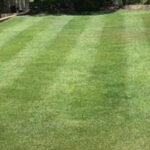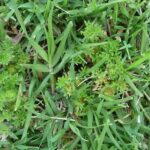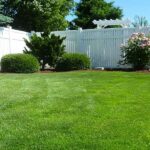Growing a lawn is a relatively simple process but boy, can things go wrong.
People face many problems growing a beautiful lawn such as wear and tear created by children underneath a basketball hoop, or a track created by a family pet. Or brown areas created by shade (no lawn grows actively in shade).
The most common response to problems such as these seems to be throwing fertiliser at it. But you need to ask yourself why?
One of the ways to maintain a quality lawn is to give it a consistent, adequate supply of nutrients throughout the year. When the general public go to a local garden centre they grab a bag of granular product that promises all kinds of things: “quick greening”, “long lasting”, “helps water retention”.
What do you get from an off-the-shelf granular fertiliser?
What you do get from these products is a rapid response from a big hit of nitrogen. It’s called a growth spike. Within a week your lawn has produced lush, soft green growth, but this tapers off quickly, sometimes within a fortnight. The soft growth is cut off at the next cut leaving you almost back to where you started.
What do you need from a quality fertiliser?
A quality fertiliser should produce a slow, long-lasting feed of a particular nutrient or group of nutrients, to sustain your lawn over a period of time. You can expect this to be 70–80 days from premium slow-release liquids.
Certain times of year and certain situations also demand different elements. For example, don’t plough a nitrogen source into your warm-season lawn going into the cooler months. The nitrogen won’t be used as the lawn is going into dormancy. A granular form will also leach away, effectively useless and harmful to the environment.
Targeted nutrients are required for different situations. For example:
• Potassium-based fertilisers are required for root strength.
• Iron/manganese and sulphur fertilisers are required at lower growth times of year to unlock other nutrient deficiencies at higher growth times.
• Calcium-based liquid fertilisers are needed for Calcium Carbonate lock up issues.
Foliar fertilisers versus granular fertilisers
I am a strong advocate of foliar (leaf-absorbed) fertilisers.
When applied by misting, flat fan nozzles, they stick to leaves and are readily absorbed by the grass leaf and stem. There is no waste; no run off. The grass receives the entire amount, some for use immediately, and some stored for use at times of rapid, peak growth.
The environmental advantages are enormous. There is no run off or leaching into ground water tables.
The drawback for the public however, is that these high-tech fertilisers are generally not available to the public. That’s where operators such as The Lawncare Man come in. Unlike most franchises, we are licensed to buy and apply these products, and have the equipment and expertise to apply them as specified by the manufacturer.
In my experience the only products that can claim to be true slow-release products are the liquid products. We offer 4 visit programs which entail visits every 12-13 weeks. Yes, the products I use are expensive, but they are quality products which in many cases will feed your lawn for at least 9-10 weeks at a time.






